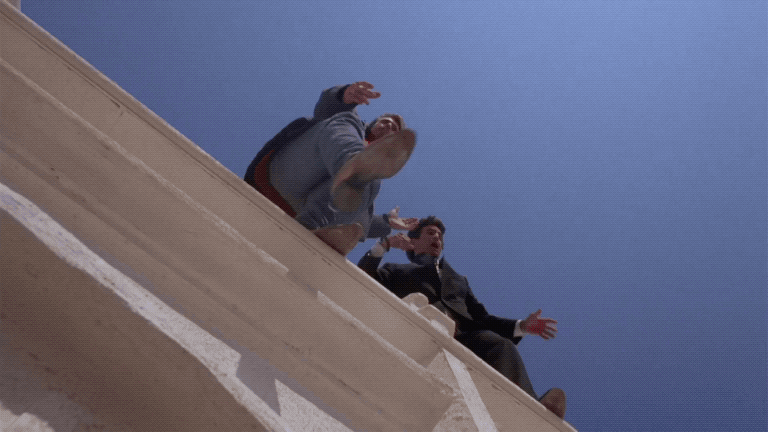On Why Hitchcock Still Can Make You Sit on the Edge of Your Seat.
Written as part of my education in Medialogy in December 2003
From the introduction:
What is Suspense?
Suspense is today such an incorporated element of movies that it for many seems second hand, but what elements are needed to create a good suspense scene? It is easy to spot a non-working suspense scene, but what are the key elements that make a good scene become a masterpiece?
It is impossible to talk about suspense without mentioning Alfred Hitchcock (1899-1980). He was the master of the technique. Although Hitchcock was not the first to use suspense in movies he had in the “golden era” of his career (from the mid 50s to the late 60s) developed a template for implementing suspense that worked so well that it is still revered as the best examples of the use of suspense.
In Hitchcock’s own words:
“There is a clear difference between surprise and suspense […]. We are sitting here and having an innocent conversation. Let us assume that there is a bomb under this table between us. […] suddenly there is a loud boom and the bomb goes off. The audience is surprised, but before this surprise they have only seen a very ordinary scene without any significance. Let us instead look at suspense scene. The bomb is under the table and the audience is aware of this because they have seen the anarchist plant it there. They also know that the bomb will go off at one o’clock, and up on the wall is a clock showing that the time is now quarter to one […]. In the first scene we have given the audience 15 seconds of surprise […] but in the last scene we have given them fifteen minutes of suspense.”.
The whole scene rests on this difference in knowledge and the audience’s fear on behalf of the unknowing characters.
In short: Suspense is a dramaturgy technique that plays of the difference in knowledge between the audience and the characters on the screen. It often revolves around subjects like; will the hero reach the right place and save the heroine before it is too late? Will the bomb expert defuse the bomb before it goes of? Will the detective see the sinister figure waiting in the alley?
Download
Download the PDF here (2,5 MB): Elements of suspense
